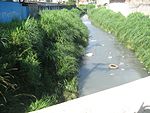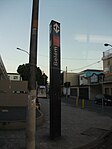Estádio Parque São Jorge
1928 establishments in BrazilAmerican football venuesFootball venues in São PauloSport Club Corinthians PaulistaSports venues completed in 1928 ... and 3 more
Sports venues in São PauloUse American English from June 2013Use mdy dates from June 2013
The Estádio Alfredo Schürig, most commonly known as Estádio Parque São Jorge, or Fazendinha, is a football stadium inaugurated on July 22, 1928 in São Paulo, Brazil. It can hold up to 13,969 people. The stadium is owned by Sport Club Corinthians Paulista. Its formal name honors Alfredo Schürig, president of Corinthians from 1931 to 1933. Fazendinha means Little Farm.
Excerpt from the Wikipedia article Estádio Parque São Jorge (License: CC BY-SA 3.0, Authors).Estádio Parque São Jorge
Rua São Jorge, São Paulo Parque São Jorge
Geographical coordinates (GPS) Address Phone number Website External links Nearby Places Show on map
Geographical coordinates (GPS)
| Latitude | Longitude |
|---|---|
| N -23.526833333333 ° | E -46.568469444444 ° |
Address
Estádio Alfredo Schürig (Estádio do Parque São Jorge;Fazendinha)
Rua São Jorge 777
03087-000 São Paulo, Parque São Jorge
São Paulo, Brazil
Open on Google Maps










